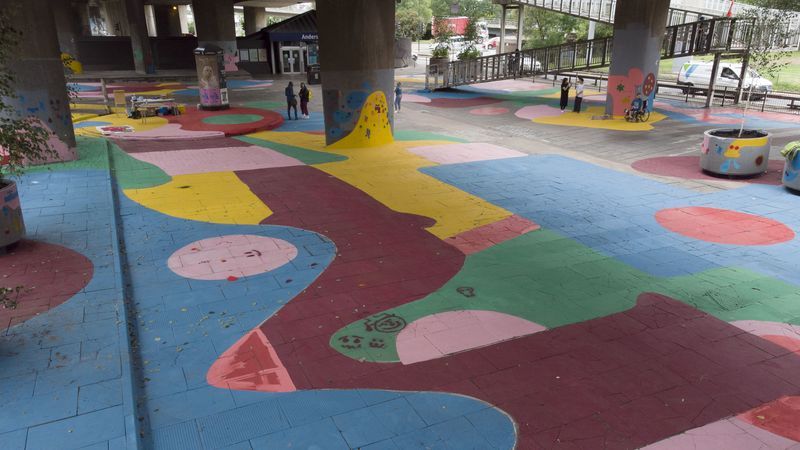
🎨 Street art can make it safer for pedestrians to cross the road
US initiatives have recently demonstrated that artistic interventions in the form of street art near crossovers can enhance pedestrian safety.
Share this story!
Soon, a number of European cities will have the opportunity to decorate their roads with street art as a way of making them safer for pedestrians and bicycles to cross. The Asphalt Art Initiative is a project that wants to increase pedestrian safety by painting murals on the pavement near crosswalks and along curbs. Nineteen cities in Europe will get a grant of $25,000 from the initiative and the project’s sponsorship was announced on October 10th during a gathering for urban leaders organized by Bloomberg Philanthropies.
US initiatives have recently shown the effectiveness of artistic interventions when it comes to enhancing pedestrian safety, especially when it’s combined with other traffic-calming solutions such as bollards and modified curbs. As a result of one art installation in Kansas City, Missouri, seeds at crash-prone crossroads were diminished by 45%. In Baltimore, Maryland, the project colored curbs which encouraged 41% more cars to give the right-of-way to pedestrians.
The program's creators believe the painted roadways will help further reduce risk for pedestrians and bicycles in European cities as well even though they already have a much higher overall traffic safety than American cities.
“From our groundbreaking work in New York to projects across the US and now expanding to Europe, the Asphalt Art Initiative continues to highlight new possibilities for city streets,” said former New York City Department of Transportation Commissioner and current principal for transportation at Bloomberg Associates Janette Sadik-Khan. “Projects like these not only connect people, but make streets safer, and we encourage cities everywhere to paint their own transportation masterpieces.”
Picture: Michael Rea/Bloomberg Philanthropies via Bloomberg
By becoming a premium supporter, you help in the creation and sharing of fact-based optimistic news all over the world.


